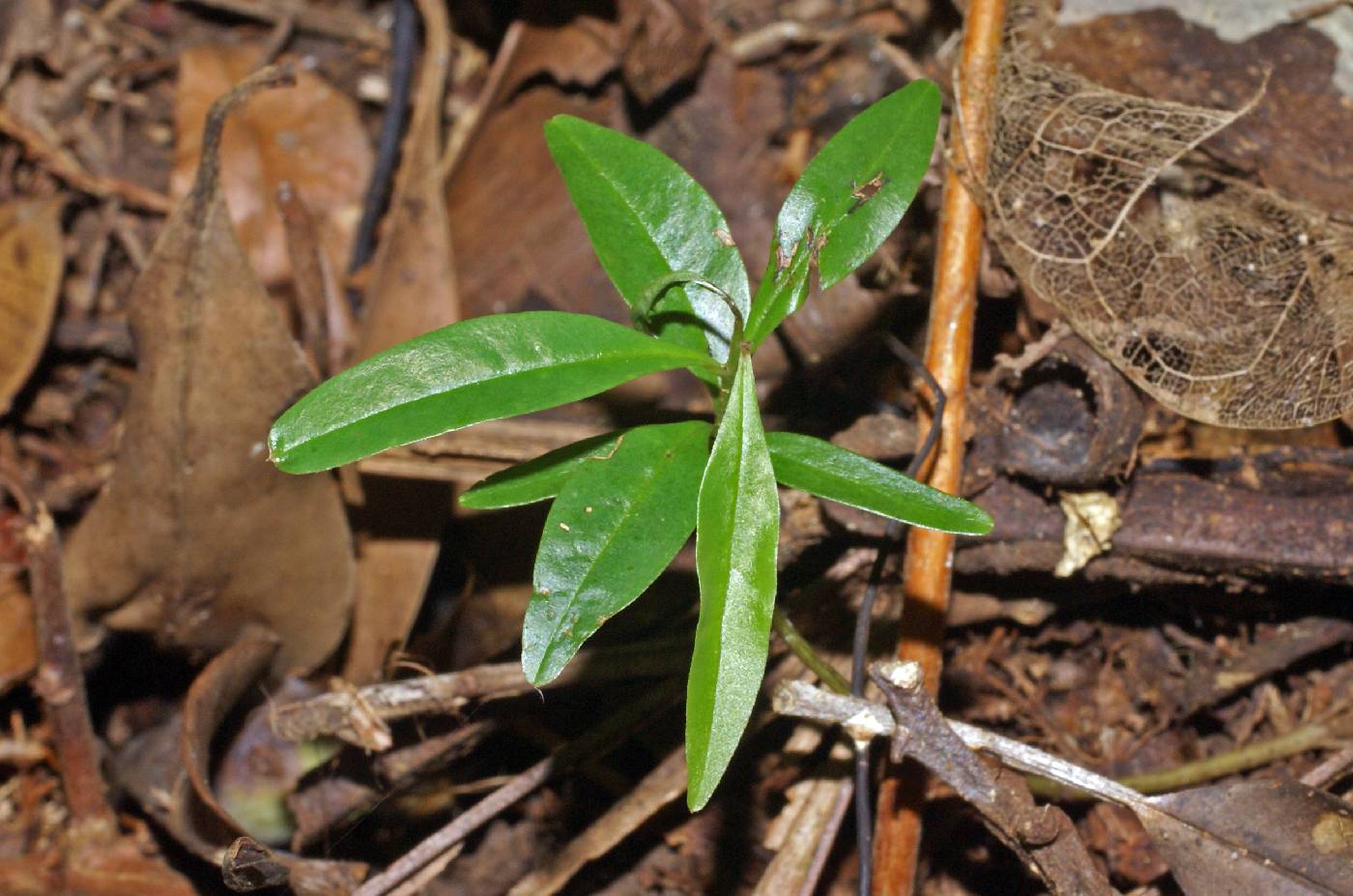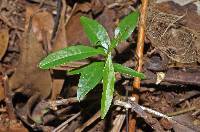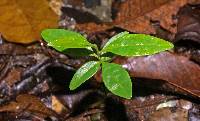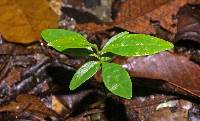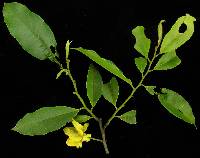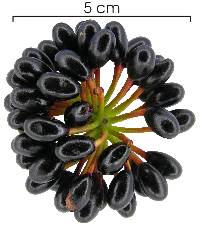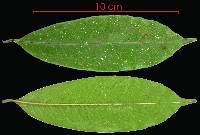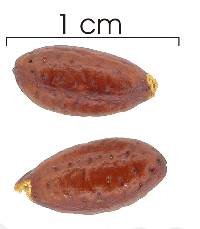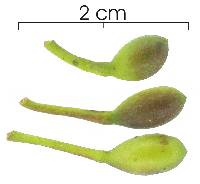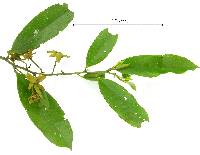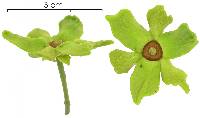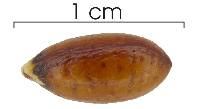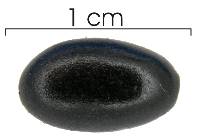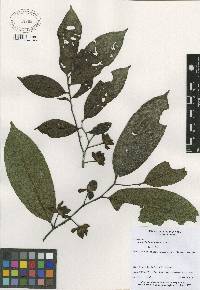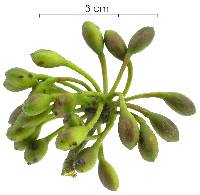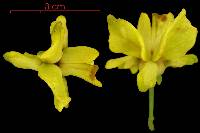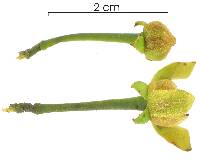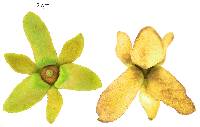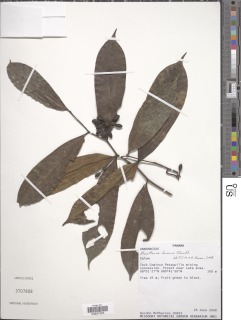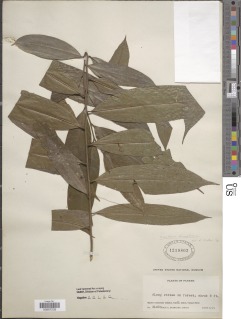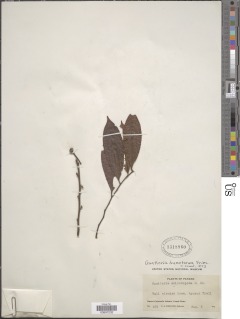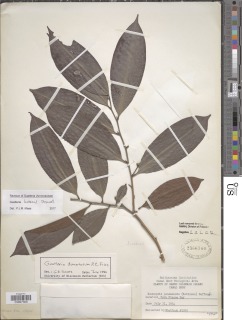

|
|
|
|
Family: Annonaceae
sigua negro, more...sigua negro
[Guatteria dumetorum R.E. Fr.] |
Description: A large forest tree with a straight trunk that can be nearly cylindrical or rather fluted. In big trees, the trunk broadens at the base into small buttresses. The bark is dark or even black. The branches are long, zig-zag between leaves, and are green toward the end. Leaves are alternate and arranged very regularly, in a flat plane, along the branches. The upper surface of each leaf has clear indentations along the veins. Reproduction: Flowers are on short stalks, along the branches among leaves, in small clusters, produced from February to August. The petals are thick and greenish. Fruits are green, warty, composed of many small sections, each with one seed. Fruits mature from August to November. Distribution: Very common and widespread from Gamboa to Sherman in the lowland forests near the Canal, but not found on the Pacific slope, and not found in the very wet or high elevation forests of Santa Rita and the mountains. One of the major canopy species in the old forest at Barro Colorado, where juveniles are also abundant, and saplings are frequently seen along Pipeline Rd. Not seen in open areas, though. Similar Species: Alternate leaves in a regular, flat plane, with the branchlets zig-zagging between leaves, are the characters of the family Annonaceae, and this species is very typical of the family in these respects. The flowers and fruits are also typical of the Annonaceae. G. dumetorum is best recognized from other Annonaceae by the way the upper surface of the leaf is indented along the veins. The other Guatteria, LK guatam G. amplifolia, LK2 also have corrugated leaves, but they are larger leaves, and the tree is much less common. Other Guatteria in the area LK guatse (G. sessilicarpa LK2 and LK guatal G. allenii) LK2 are rare and found only in wet forests of the upper Chagres. See also LK unonpa Unonopsis panamensis, LK2 and other Unonopsis, and LK annopu Annona purpurea. LK2 Finally, remember that other families, especially Myristicaceae, have leaf and branch patterns quite like Annonaceae. Descripción: Árbol de 10 a 30 m de alto. Tronco con raíces tablares en la base. Corteza exterior negra, internamente es aromática. Ramitas terminales verdes y en ‘zigzag’. Hojas simples y alternas, de 6-15 x 2-5 cm, elípticas, con ápice acuminado, bordes ondulados y base aguda. Pecíolo de 0.6-1 cm de largo y ligeramente acanalado en la parte superior. Flores verdes o verde amarillentas. Frutos en monocarpos, de 0.5-1 cm de largo, verdes, tornándose negros al madurar. Cada monocarpo contiene una sola semilla. Datos Ecológicos: La especie crece a bajas y medianas elevaciones, en bosques húmedos o muy húmedos. En Panamá se encuentra en las provincias de Bocas del Toro, Chiriquí, Colón, Darién y Panamá. Común y fácil de observar en el bosque maduro de la isla de Barro Colorado. Florece y fructifica durante todo el año, principalmente entre febrero y agosto. Especies Parecidas: A menudo se confunde con LK crempa Cremastosperma panamense LK2 , pero C. panamense es un arbolito pequeño que crece en parches agregados y los frutos maduran de color rojo o anaranjados. También se puede confundir con LK dio2ar Diospyros artanthifolia LK2 , pero en D. artanthifolia las hojas presentan puntos negros por el envés, los frutos son grandes y globosos, verdes, tornándose amarillos al madurar. Usos: La madera es empleada para postes de cercas y como horcón o solera en construcciones rurales. De la corteza exterior del tronco y de las ramas más gruesas se extraen fibras utilizadas como cuerdas para amarrar. Tree, 20-35 m tall, to 80 cm dbh, sparsely buttressed; outer bark coarse, dark, flaky; inner bark tan, unmarked; younger branchlets appressed-pubescent, becoming glabrate; sap with sweet aroma. Petioles 6-10 mm long, pubescent; blades narrowly elliptic, acuminate, acute at base and decurrent onto petiole, 6.5-15 cm long, 2.5-5 Frequent in the old forest. Flowers throughout the year, mainly from February through August, with some individuals flowering more than once a year. Time of fruit maturity not known. Bocas Species Database Characteristics: Tree that reaches from 20 to 30 m in height. Leaves are simple and alternate. Flowers are green or greenish-yellow. The fruits are green, turning black when ripe. |
|
|
|

